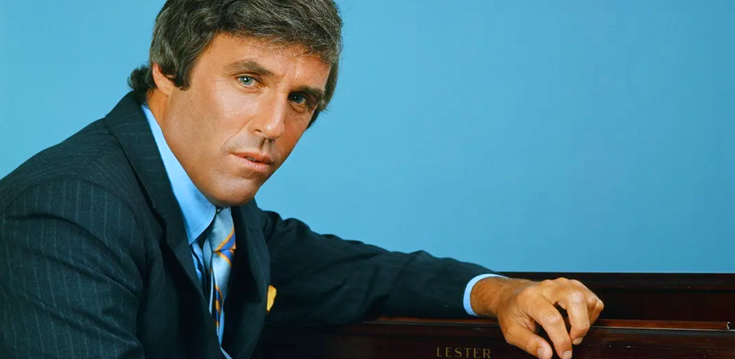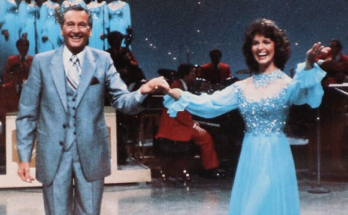

Burt Freeman Bacharach, a towering figure of American song, has passed at the age of 94. What can be said of the man that hasn’t already been codified in legend over and over? Starting in the 1950s, working with a variety of lyricists — most notably the late Hal David — Bacharach composed literally hundreds of songs — no fewer than 73 of which reached the Billboard Pop Top 40.
Born in Kansas City and raised in Queens, young Burt was pushed into piano lessons by his mother, an amateur songwriter herself, and by his teens he had procured a fake ID just so he could sneak into the jazz clubs on 52nd Street. He went on to study at several prestigious music schools, most notably the Music Academy of the West, where he was mentored by the legendary Darius Milhaud, who also taught Dave Brubeck, Steve Reich, Pulitzer-winning composer/pianist William Bolcom and other heavyweights.
Young Burt got his break in the biz by accident. He was drafted into the Army at age 22, and while serving in Germany, playing with dance bands in officers’ clubs, he met fellow soldier Vic Damone — who had already become a singing sensation prior to his own military service. Back in the States, Bacharach became Damone’s band leader, leading him to many contacts within the music industry. In 1952 Nat King Cole was the first to record a Bacharach composition, a piano jazz instrumental titled “Once in a Blue Moon.” Though the song was not released as a single and was largely overlooked, it was a foot in the door.
Enter Marlene Dietrich, legendary actress of the silver screen, who in the 1950s was enjoying a remarkable second career in her middle age — as a cabaret act. Bacharach was hired as her musical director and spent much of the next decade supporting her on stages around the world and in the recording studio, where the two cut four albums together.
But it was the meeting of Bacharach and Hal David in the iconic Brill Building in 1957 that would go on to have the greatest impact on the world of music. Their first collaboration, a song called “The Story of My Life,” was snapped up by country singer Marty Robbins, who immediately took it to number one on the country charts. Perry Como’s recording of the pair’s “Magic Moments” followed, and while it only made number four on the pop charts in America, the single went to number one in Britain, as had “Story of My Life” — making Bacharach/David the first songwriters in history to have consecutive number ones in the UK.
In 1961 Bacharach discovered Dionne Warwick as she laid down background vocals for the Drifters’ recording of “Mexican Divorce.” She very quickly became his muse, and his go-to singer for recording demos of his new songs. Scepter Records boss Florence Greenberg — at the time one of the few female record executives — heard Warwick on a Bacharach demo and famously said, “Forget the song, get the girl!” Warwick was signed right away, and together she and Bacharach would go on to release 39 consecutive singles that made the Billboard Hot 100.
The 1970s were comparatively fallow ground for Bacharach’s career, with the hits becoming lesser and farther between, but in the ’80s his new romantic and professional partnership with songwriter Carole Bayer Sager revitalized his spark and a new spate of gold records followed. Additionally, a new generation of musicians was beginning to recognize the gems in the Bacharach back catalog, and some of those old chestnuts became hits all over again; pop country mainstay Ronnie Milsap recorded “Any Day Now” in 1982 and not only topped the country and adult contemporary charts with it, but saw the single cross over to number 14 on the Hot 100. And of course UK New Wavers Naked Eyes took “Always Something There to Remind Me” to number eight on the Hot 100 in 1983.
Bacharach/Sager’s “That’s What Friends Are For,” first recorded to little notice by Rod Stewart, was rebooted as an AIDS charity single in 1985 by an all-star cast including Dionne Warwick, Elton John, Gladys Knight and Stevie Wonder — topping three US and numerous foreign charts, selling more copies than any other single of the year and winning two Grammys.
Burt Bacharach slowed down but never stopped working. His 1998 album Painted from Memory, a collaboration with Elvis Costello, won a Grammy, and the two would collaborate yet again in 2018. At age 87 he took the stage at the Glastonbury Festival, playing to the grandchildren of the folks who bought his earliest records. Profits from one of his last releases, 2018’s “Live to See Another Day,” were donated to a nonprofit support organization for families of the victims in the 2012 Sandy Hook Elementary School shooting.
And though now he belongs to the ages, his sophisticated, urbane, lush music will always be there for us, a warm blanket of sound against the cold of the Void. And we are the better for it.
Don’t believe it? Check out our 40-song Burt Bacharach playlist at Spotify.



